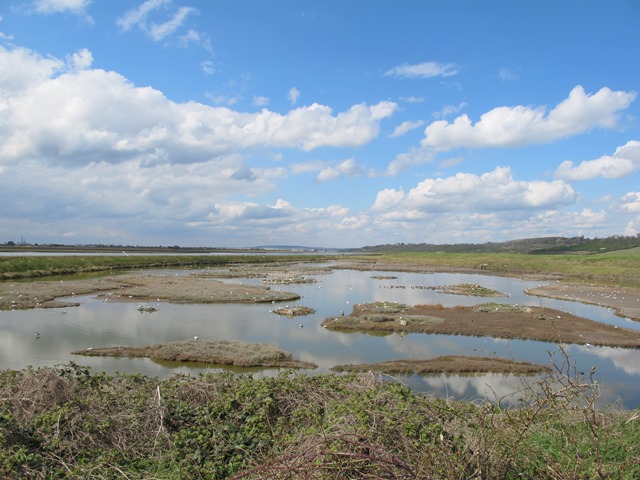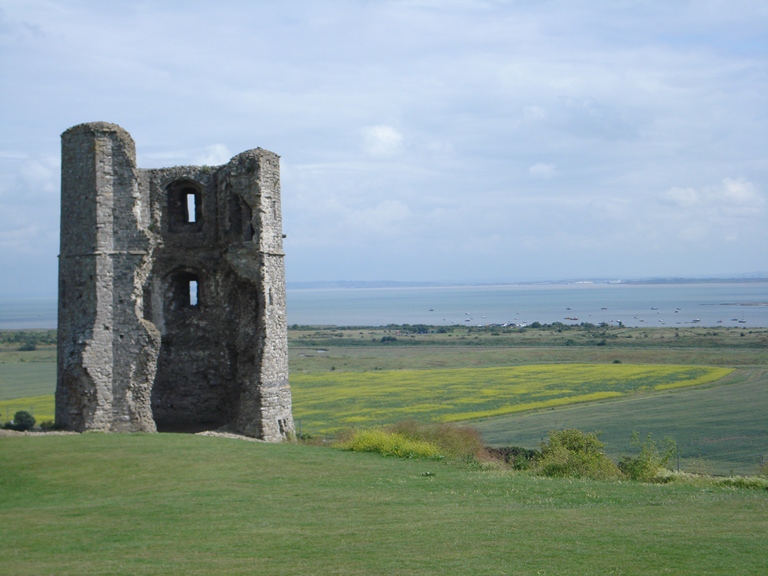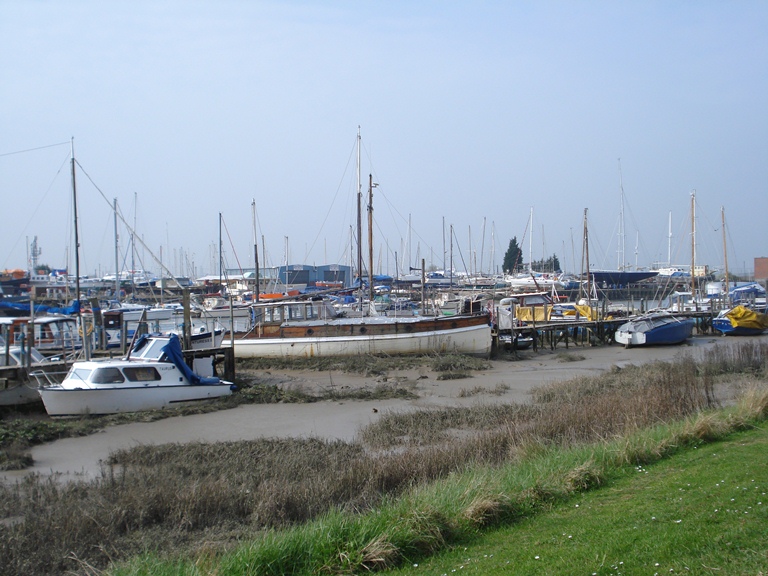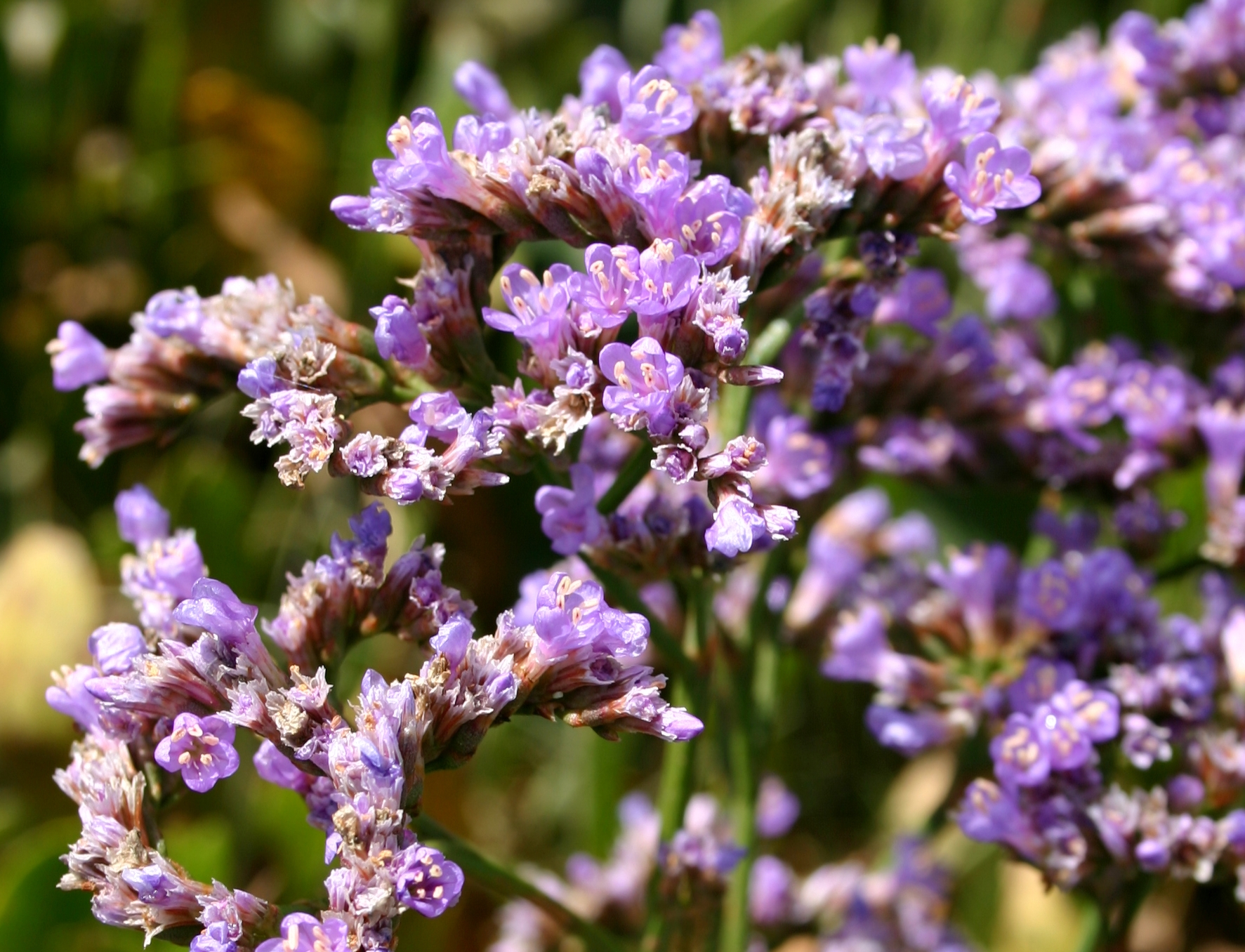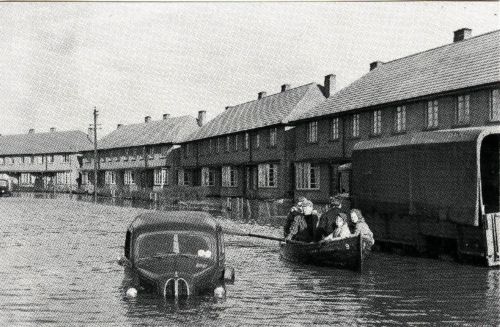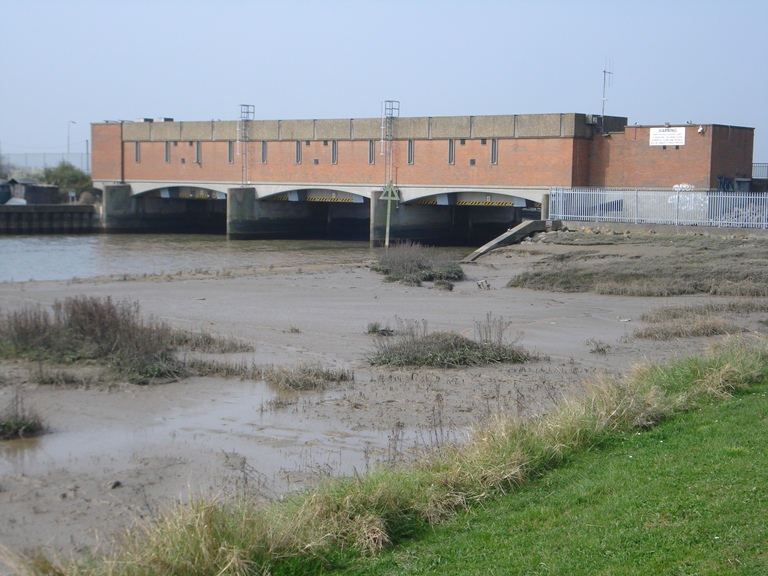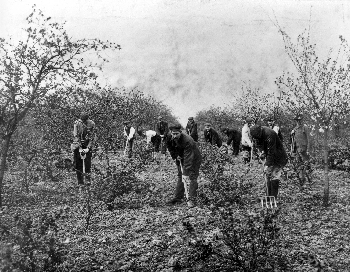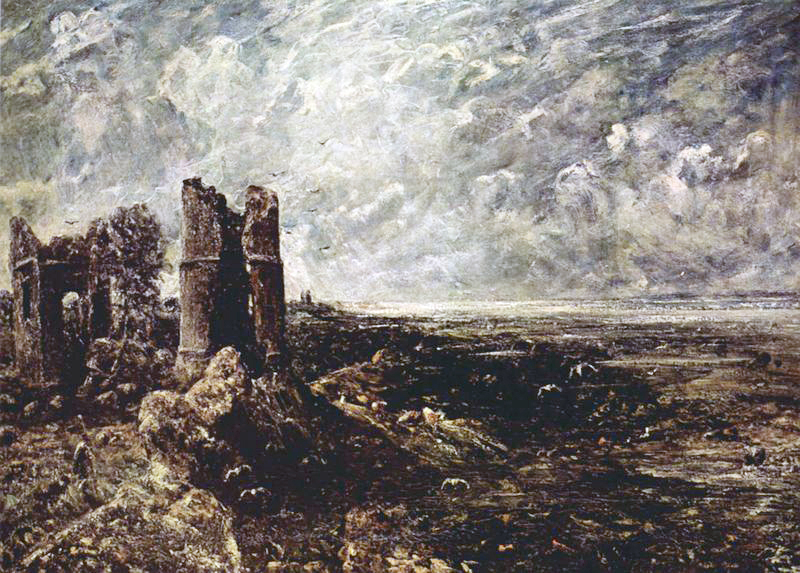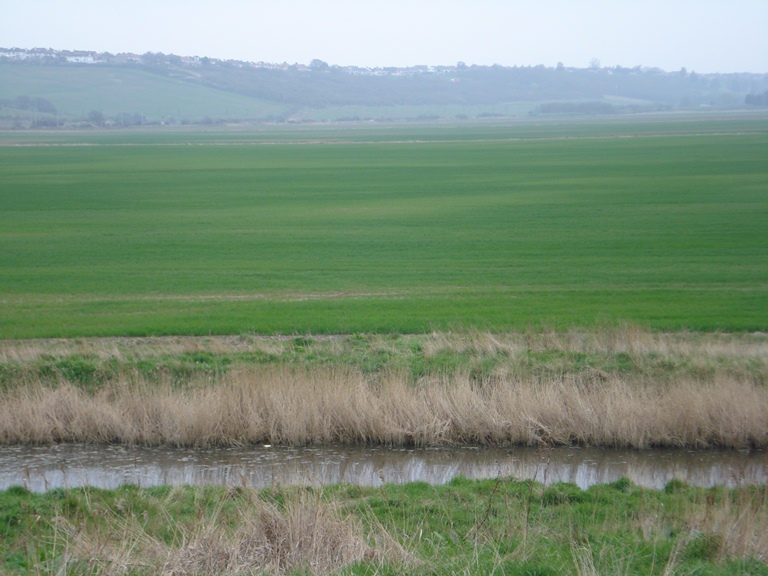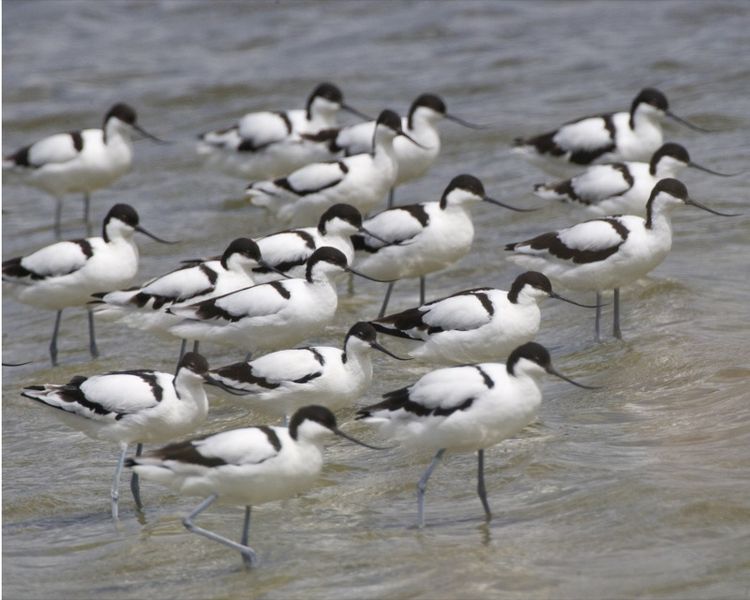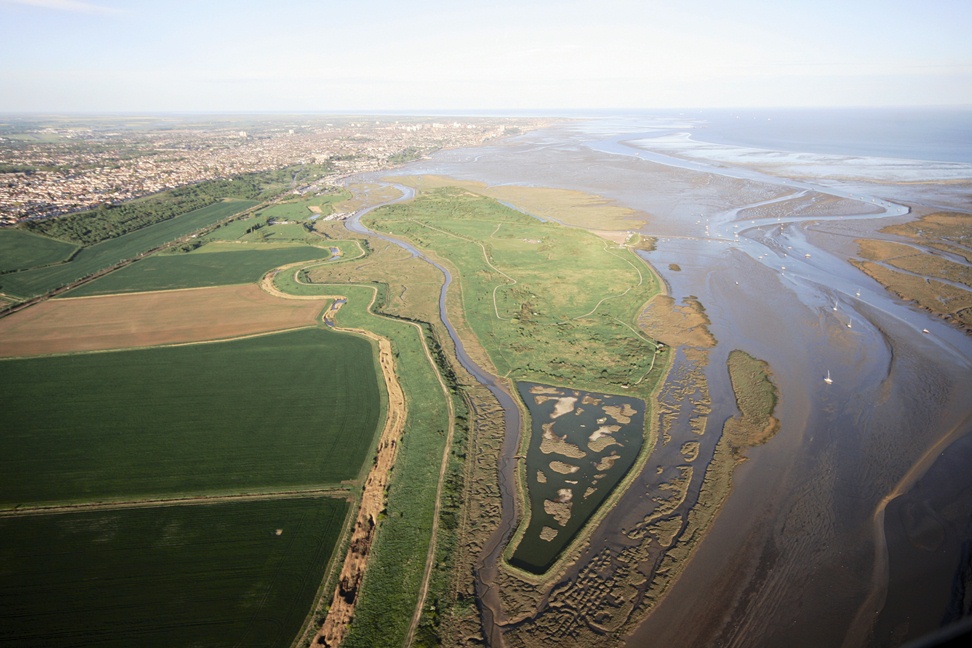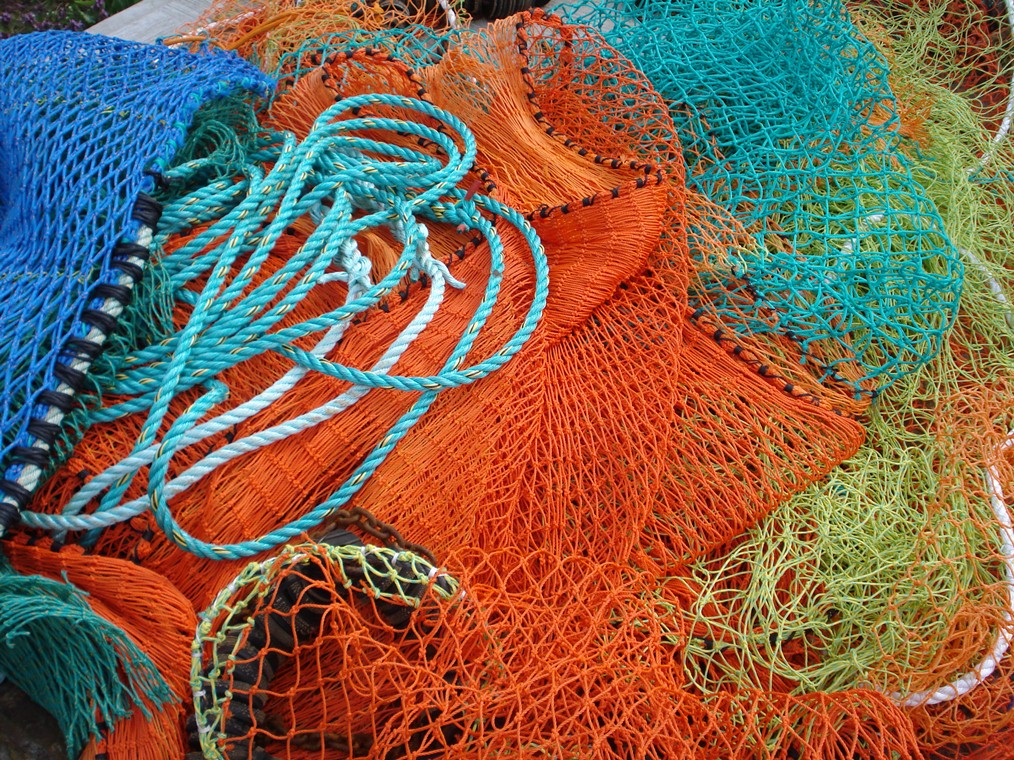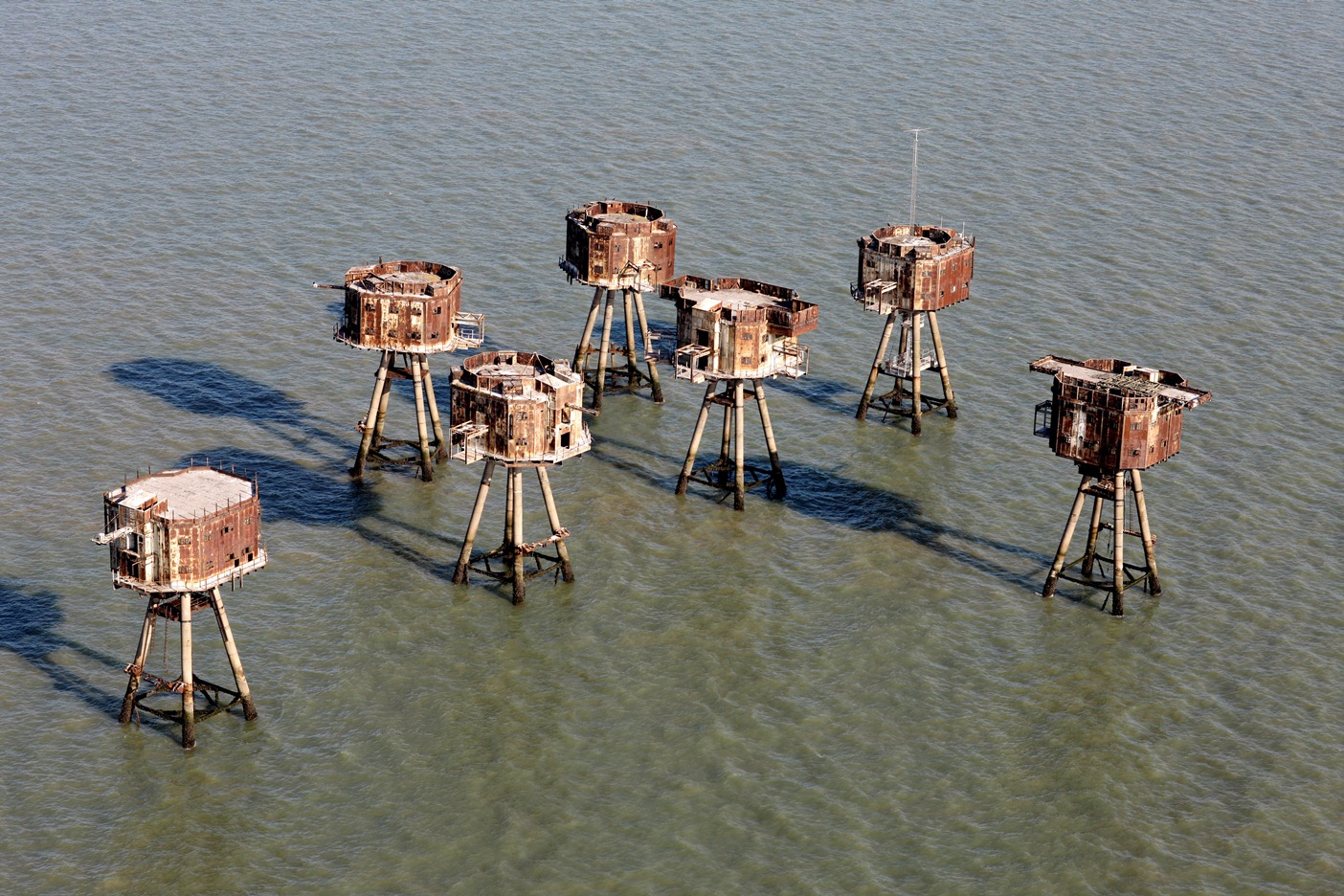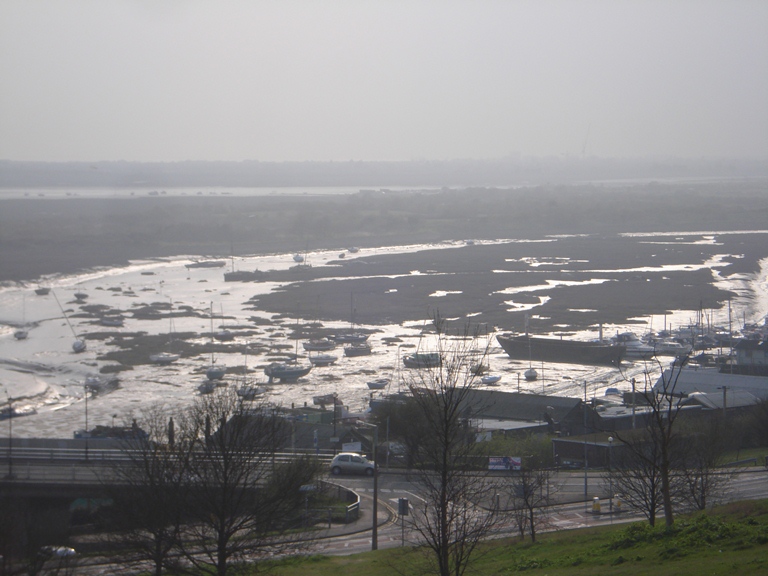We are nearly at the end of the walk but the climb up Church Hill should have been worth it for this view from Marine Drive.
In front of you is a full panorama of the Thames estuary. To the far right is Benfleet – where we started the walk – and Canvey Island. Below you and slightly to the right is Two Tree Island where we visited the bird sanctuary. Below and to the left is Old Leigh. If it’s a nice day, you should be able to see Kent on the south side of the Thames estuary.
We hope that you have appreciated that this is an in-between landscape which is neither land nor sea. The physical landscape is continually evolving, shaped daily by tides. We have seen how the saltmarshes and mudflats form a very special environment for particular plants, flowers, birds and insects which thrive in the rich inter-tidal habitats. But this environment is less suitable for people.
Over the centuries, people who have wanted to settle here have needed to protect themselves from the sea. They have built embankments and sea walls to protect their villages and towns and to create farmland for growing crops.
Others have earned a living from the sea, particularly from the shellfish that are found in abundance on the mudflats. Over the last century, Londoners have been drawn out to this part of Essex, attracted to the healthy sea air. The area expanded after the Second World War as people moved out of the city for a better quality of life.
Ken: “You’ve got to have a certain kind of character, I think, to appreciate this sort of landscape, and not everybody does.”
The writer John Fowles grew up in Leigh-on-Sea and often looked down upon Two Tree Island and the Benfleet Creek from here. This is an extract from one of his diaries, written on 2nd of January 1950:
“A raw, dull day with a wind and all-pervading greyness. The tide full in and the sea faintly greygreen, ugly. Few people about. At sea the hulls of the small yachts and motorboats wintering at their moorings. No birds but seagulls resting silently on the sea or uneasily flying up. The fishing fleet moved out of Leigh into the gloom of the east coast, smacks painted grey and green with their crews on deck. I envy their free life...”
“Old Leigh is a single narrow street with salty, muddy houses still retaining the character of fishing and naivety. The railway line in this case preserves the community, its special nature. Past Old Leigh the cockle sheds a line of dark huts. The boat building shed, the beginnings of the seawall, the corporation dump, the loneliness, in a sense all nicely divided and gradated. A bleak sort of affection is possible.”
Helene: “We hope that you leave this walk also feeling a ‘bleak sort of affection’ as John Fowles put it. Hopefully you have seen that the apparently flat, lifeless and grey expanses of the estuary are actually a very dynamic environment, a specialist habitat and a rich resource.”
